
Hilary is a professional journalist and novelist. She writes dark, disturbing fiction often involving a glamorous lifestyle that is rotten at the core. She delves into her characters’ psyches with the precision of a surgeon. Her debut novel, THE DAMAGE DONE, will be published on September 28, 2010 by Forge.

Her stories have appeared in A Twist of Noir, Spinetingler, Crimefactory, Needle, Thuglit, and Beat to a Pulp, among others. Her story “Insatiable” won the 2010 Spinetingler Award for Best Short Story. She is also the author of 18 travel guidebooks for Frommer’s. Originally from Toronto, she has lived in New York since October 2001. Her articles have appeared in magazines in the U.S. and Canada, including, Canadian Living and Reader’s Digest. For more about her work, check out hilarydavidson.com and thedamagedone.net.
She met me at The Slaughterhouse. I showed her the Christian Lacroix room and the cellar.
She complimented me on the wine list and asked for a Chateau d’Yquem.
Naturally, I poured the drinks.
We talked about the criminal mind and Kafka, we talked about gender conditioning and a patriarchal legal system.
.
.
.
Deep cruelty often lurks behind an ostentatious designer lifestyle in your stories. Do you think that the image people portray in their lives in terms of acquisitions and lifestyle is a mechanism to hide their motives and shadows?
I think that ostentatious consumerist lifestyle can serve as camouflage for all sorts of reptilian characters. What fascinates me is the distance between the image that a person projects on the surface and what’s really going on under his or her skin. To some extent, that distance exists in everyone, and it’s not inherently sinister. But in a villain, the distance is vast and creates a great deal of tension. I don’t think that the dark characters I write about would view themselves as villains, but they consciously try to manipulate others’ perceptions of them, and they use money and gifts to do that. To me, a great villain is a great seducer.
.
.
If one considers that political influence relies on propaganda, parallels may be drawn between this and the verbal manipulation of a seducer. What does seduction mean to you within the differing perceptions of the sexes and their need for power, and do you think that a woman kills differently to a man?
The parallel between political propaganda and verbal manipulation is a strong one, because both are based on telling people what they want to hear. A great seducer knows what their mark wants, and what their weaknesses are. That’s true of both sexes. Mr. Kennett, the narrator of “Insatiable,” isn’t what you might think of as a seducer — he’s old and fat — but he knows his beautiful wife’s weaknesses and he is relentless in exploiting them. Desiree in “Fetish” looks like a classic noir seductress, but it’s not her beauty that she uses to manipulate her father, it’s his guilt. She gives him the chance to play the hero, and that’s something he can’t resist. Seduction is usually understood to be purely sexual, but its Latin root means to lead astray. Sex may be part of the seduction, but the real hook is psychological.
I’m fascinated by the psychology of murder, and the question of whether there are differences between why men and women kill. The Victorian idea of women having finer feelings than men has always bothered me. If you relegate half the population to the domestic sphere, you certainly reduce their opportunities to murder, but their violent, angry feelings just get channeled in other directions. I think that women are just as predatory and power-hungry as men. In an equal-opportunity world, men and women have the same basic reasons for killing: anger, jealousy, revenge. But many people are still shocked by women who kill. The Amy Bishop case is a perfect example. Bishop is a Harvard-educated neuroscientist who gunned down six of her colleagues at the University of Alabama after she was denied tenure. After her arrest, the police went through her background and discovered that she had committed other crimes, including killing her younger brother when she was 21. At the time, the brother’s death was ruled accidental, even though Bishop fired a shotgun at him. The fact that she went free, and that there was never a full investigation into her brother’s death, suggests to me that many people still can’t believe that a woman could be a cold-blooded killer.
.
.
If the exploitation of a patriarchal judicial system by women is connected to the history of male fear of female sexuality, to what extent do you see mythology and religion as helping female killers get away with murder?
That’s a complicated question because, historically, when you think of women who’ve bucked the sexual norms of their societies, they’ve been punished very harshly. But the other side of the coin is that most societies are reluctant to view women — made weak by God and nature — as capable of murder. Women were supposed to be warm and nurturing, not calculating killers. If that’s your point of view, it’s almost unimaginable that a woman could choose to kill. You know that children’s rhyme about Lizzie Borden?
Lizzie Borden took an axe
And gave her mother forty whacks
And when she saw what she had done
She gave her father forty-one
Well, Lizzie Borden was acquitted of murder by a jury, even though she didn’t even testify in her own defense. And she inherited quite a lot of money thanks to the murders.
There are two novels I love that take historical cases of women accused of murder and explore what might have happened. One is Margaret Atwood’s Alias Grace, which tells the story of Grace Marks, a 16-year-old servant who was convicted of murdering her employer and his mistress. This happened in Markham, Ontario, just north of what’s now Toronto, in 1843. Marks was convicted and sentenced to death, but her sentence was commuted by a judge who just couldn’t believe that such a lovely girl could do such a horrible thing. Atwood does a brilliant job of portraying Marks as a sly manipulator while leaving open the question of what really happened at the scene.
The other novel is Megan Abbott’s Bury Me Deep, which is loosely based on Winnie Ruth Judd, the notorious “trunk murderess” convicted of killing a roommate in Arizona in 1931. The press labeled Judd “the Blonde Butcher,” and it’s clear that she was sleeping with a married man. Was she a murderer? That question will probably be open forever, but Abbott does a spectacular job of examining the available evidence and re-imagining what really happened at the crime scene.
.
.
Virago Press brought out a lot of novels covering the theme of women killers in Victorian Britain getting away with murder because the patriarchal psyche had sentimentalised them as part of its own defence structure, and that was implicit within the judicial system, in other words, judges didn’t believe women were capable of killing. ‘Lady Audley’s Secret’ by Mary Braddon covers a lot of the same ground, well worth reading.
Name an experience that changed your life and influenced your writing.
Travel has changed my life and influenced my work more than anything else. I have a history of taking a trip and then doing something that saner people might consider impulsive. For example, I went to Thailand when I was on staff at a magazine in Toronto and came home determined to quit and become a freelance writer. But in terms of influencing my writing, a trip I took to Prague roughly four years ago had a huge impact. At the time, I was doing well as a freelance journalist, writing travel guidebooks for Frommer’s and articles for magazines. But I was bored, churning out formulaic books and articles that had a limited shelf life. I wanted to write fiction, but I’d started working on several different novels and tossed them aside after writing anywhere from four to ten chapters. I had ideas, but no commitment to finishing anything. I was hopeless at outlining, so I’d get to a point where I had no idea what was supposed to happen next. And I had a voice in my head that would say things like “Stop wasting your time. No one’s going to read that!”
Visiting Prague was interesting, because everywhere you go, there are reminders of Franz Kafka. He’s one of my favorite writers, and I loved being able to explore his city and hear strange stories about him, like how he was obsessed with the hands on the statue of St. Barbara on the Charles Bridge. But there was one thing I learned about Kafka that shocked me, which was that he’d asked a friend to destroy his unpublished work when he died. The only reason we have The Trial and The Castle is because his friend ignored his wishes. Apparently Kafka had a voice in his head that told him he was wasting his time, too. There was something almost inexpressibly sad about that to me. At the same time, it was inspiring that he’d heard that voice and continued writing fiction anyway. When I came home, it definitely made it easier to tell that voice to shut the hell up.
.
.
Thankfully Max Brod chose to ignore his request. His lover, Dora Diamant, partially executed his wishes, secretly keeping up to 20 notebooks and 35 letters until they were confiscated by the Gestapo in 1933. An ongoing international search is being conducted for these missing Kafka papers.
In ‘The Trial’, Kafka foresaw the bureaucratic jungle we have inherited. To what extent do you think we are living in the era of the rise of the technocrats and do you believe this generates the kind of data paranoia that is fertile territory for noir writing?
That’s such an intriguing question, because we’re living in an era in which data about individuals is constantly being mined. In the US, your credit card company knows all sorts of details about you and is allowed to sell much of that information to other companies. If you live in a city, you’re used to cameras watching you when you’re on the street or on the subway. A few weeks after 9/11, the Patriot Act was passed in the US, allowing the government to collect information about people in ways that it hadn’t been able to before — not legally, anyway. People have also voluntarily handed over all kinds of personal information on sites like Facebook, and some of them have realized that those sites are using that information in ways they never expected. For a few years there, people had the idea that they could be anonymous online, but I think that illusion is dissipating.
Yet, while all of this information is being collected about people, there’s also a tremendous amount of identity fraud going on. To me, this is a kind of tragic gift: it’s bad for society, but great for a noir writer. Identity theft is viewed as a modern plague, but if you look at classic noir fiction, identity fraud has played a major role in some of the best books in the genre. Think of Jim Thompson’s The Grifters or Dorothy Hughes’s In a Lonely Place or Raymond Chandler’s Farewell, My Lovely — all of those great novels hinge on stolen or faked identities. In a lot of noir fiction, identity is a fluid concept, because you’re never really sure of who or what you’re dealing with.
Because identity theft is an important issue in my novel, The Damage Done, I did a lot of research about it. What I really wanted to know was, how far could you realistically go in stealing another person’s identity? Partly, I was inspired by several friends and relatives who’ve been victims of identity fraud. What I found scared me, because US banks and stores and credit-card companies and other lenders aren’t doing much of anything to prevent fraud. They’ve done their cost-benefit analysis, and they’ve decided that it would be too expensive to prevent, so they just clean up the messes after they happen. I’ve read a lot of fraud reports that are almost comically ridiculous. There are people who look nothing like the person they’re impersonating, yet they still get away with using their photo IDs. When you read about the issue, it’s mind-boggling. But it’s certainly interesting territory to mine in fiction.
.
.
You have travelled extensively and you write about food and nutrition. What does being a Canadian mean to you and to what extent do you think that there is a pathology of eating locked within the criminal psyche?
I’m a dual citizen of Canada and the US, but I grew up in Toronto. Canadians tend to be curious about the rest of the world and less curious about their own country… or maybe that’s just me. When I lived in Canada, I was interested in traveling only outside of its borders, and I went everywhere from Ireland to Italy and from Russia to Thailand.
After I moved to New York in October 2001, I became interested in seeing Canada, too, and I visited places like Newfoundland and New Brunswick and British Columbia for the first time.
My favorite definition of what it means to be Canadian is from Pierre Berton, who said, “A true Canadian is one who can make love in a canoe without tipping.” If that’s true, there aren’t many true Canadians. I have my own definition, based on an exchange I had recently with Jedidiah Ayres. Jed writes and reviews crime fiction, and he did a “Ransom Notes” column for Barnes & Noble about Canadian crime fiction. He said great things about the very talented John McFetridge, but he couldn’t think of any other criminally minded Canadian authors. I sent him a bunch of names, then discovered that Sandra Ruttan, who’s also Canadian, did the same thing. It’s a long list — Sean Chercover, Rick Mofina, Linda L. Richards, Linwood Barclay, just to scratch the surface — but the funny thing was that we felt compelled to send names. A true Canadian takes pleasure in pointing out other Canadians. We may be polite, but we’re proud.
I’ve written so much about travel and food in guidebooks and articles, and some of that carries over into my fiction. Travel has in a big way. I’m working on my second novel right now, and it’s set in Peru, which I’ve written about before in short stories. Food is interesting to write about because it can be connected to a host of emotional and psychological issues. My first published story, “Anniversary” in Thuglit, features a man who is making dinner for the woman he loves. A brief excerpt:
“He had always loved cooking for the discipline and precision it demanded, but tonight he was too unsettled to take pleasure from it. He threw the two lobsters into the pot, put the lid on, and immediately felt guilty. When he cooked a lobster he normally took the time to hypnotize it first, a trick he’d learned from his father. They like the hot water, his father had told him. He was old enough to know that wasn’t actually true, but he held on to the custom of rubbing the space between their antennae to lull them into accepting their fate. There was no sense in being unnecessarily cruel, not to an animal, anyway.”
That gives you kind of a snapshot into the psychology of the character. At least, I hope it does. Using food in this way is a kind of shorthand.
.
.
Have you ever known someone as pathological as one of your killers?
Several of my darker characters are loosely based on people I’ve met. I should explain that I don’t usually write about serial killers or gangsters or people who need to be violent in their line of work. I don’t know anyone like that. The dark characters I write about seem, at first glance, to be normal people — they have homes and jobs and, often, families. But there’s something off about them. They might be obsessive or narcissistic or controlling or immature. They are not inherently evil, but under certain circumstances, they’re capable of impulsively doing evil.
I mentioned earlier that I’m intrigued by the difference between the surface of a person, and what goes on underneath. I think if those two things diverge too much, that brings a person to their breaking point, and what’s bubbling under the surface boils over and cracks the veneer. Tom in “Good Bones,” which Crimefactory published, would be a perfect example. He’s a nice enough guy on the surface, but there’s so much rage and bitterness underneath, and when his life falls apart, he discovers what he’s truly capable of.
The one trait that the sociopaths I’ve met in real life have in common is that they feel sorry for themselves. It doesn’t matter what they do, they can manage to justify their behavior in their own minds and feel wronged by others at the same time. I always think about this when I’m writing a villain. I work out how they justify their own actions to themselves. One of the most horrible, irredeemable characters I’ve ever written is Mr. Kennett in “Insatiable,” and he spends the entire story feeling sorry for himself. The worst villains see themselves as victims.
.
.
Much of what we have talked about has to do with the pathology of power. To what extent do you think the sexes need different kinds of power and do you agree with Jonathan Swift’s observation that men are grateful to the degree they are vengeful?
I don’t think that the power men and women strive for has ever really been different — but in the past they used radically different means to get power, and that was a fact born out of necessity. Swift is another writer I love, and I agree with his comment, harsh as it may seem. Gratitude is something that we tend to think of as a positive feeling, but there’s this bit of poison in it, too. When a person is deeply in another’s debt, it can create resentment that festers into a desire for revenge. That dynamic is so intriguingly twisted, and it’s something I write about in The Damage Done. The book’s main character, Lily, and her sister, Claudia, have had a rough start in life — their father died when they were young, and their mother was an alcoholic and an abuser. But Lily has grown up to be a successful writer, while Claudia is a drug addict and petty criminal. Lily’s attempts at taking care of her sister have led to a situation where Claudia depends on her yet loathes her. As a writer, it was rich territory to explore, but there’s also something absolutely heartbreaking about it.
.
.
How would you like to be perceived as a writer?
I feel like I have two distinct identities as a writer, at least at the moment. On the one hand, I’m still working in journalism, and I have an earnest desire to write things that will help people. That’s why I set up a website called the Gluten-Free Guidebook in March 2008. I want people to eat well, and travel well. I want people who read my journalism to trust me.
With my fiction, I’m being provocative, and I hope I’m being entertaining. When Steve Weddle read “The Black Widow Club” — it’s in the first issue of Needle, the magazine he created — he wrote me a note about how much he enjoyed it, but said he would never, ever let me buy him a drink. Given what happens in that story, I can’t blame him. When people see my name on a story or a book, I want them to know they’re in for a hell of a ride.
.
.
What’s the best piece of advice anyone has given you about writing?
When I came back from that trip to Prague, I went to a six-hour book-publishing workshop the next day. I hadn’t planned to attend because I figured I’d be jet-lagged, but I decided at the last minute to do it and, luckily for me, there was one slot open. The instructor, Susan Shapiro, had written a memoir about drug addiction called Lighting Up, and I’d loved the book. She was an amazing instructor, and my favorite thing that she said was “Write about your obsessions.” She made me think about what my obsessions really are, aside from books: psychology, travel, film noir, graveyards, Gothic anything, vintage. Then she made me think about how to use them in my writing. That was something I’d struggled with in journalism — I was writing what my clients wanted, and I’d sneak in references to the things that really interested me. With fiction, it’s the other way around. The funny thing is that so many other people share my obsessions. With travel or film noir, that’s easy to understand, but graveyards? That’s been a very happy surprise.
.
.
Thank you for giving an incisive and profound interview Hilary. I look forward to reading ‘The Damage Done.’


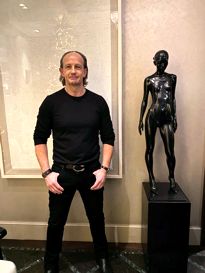
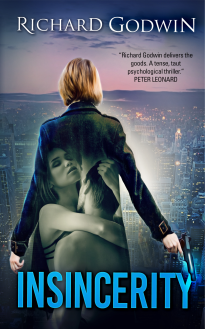
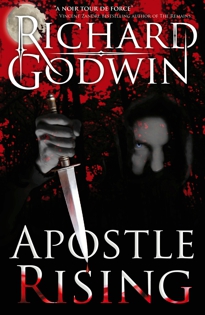
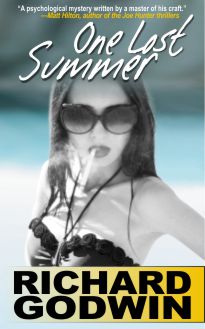
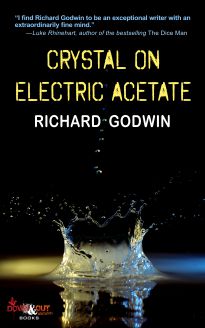
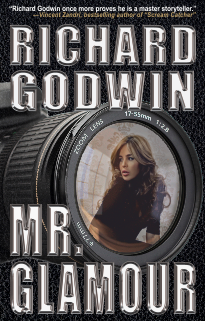
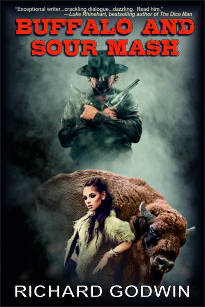
19 Responses to Chin Wag At The Slaughterhouse: Interview With Hilary Davidson